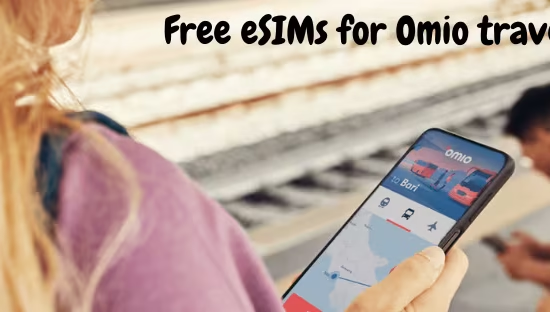
SmartRoam eSIM CEO Phil McDermott on Why Performance, Not Price, Will Define Travel Connectivity
The global travel connectivity market is at a crossroads. eSIM adoption is accelerating as devices go SIM-only, but the market is also becoming increasingly crowded — with dozens of providers competing largely on price. In this landscape, the real question is: who will move beyond being just another reseller and build a sustainable, differentiated value proposition?
SmartRoam, led by Phil McDermott, is making a bold bet on that future. A seasoned telecom executive with deep experience in mobile networks and international roaming, McDermott now serves as CEO of SmartRoam and its parent company, WorldOV—a licensed mobile network operator with more than 600 direct roaming agreements across 190+ destinations.

Phil McDermott, SmartRoam CEO
Under his leadership, SmartRoam positions itself not simply as another travel eSIM app but as a network-driven platform. Their pitch is simple yet powerful: install one eSIM once, and use it globally—with no throttling, access to 81 5G networks, and local breakout for faster, lower-latency connections.
In this interview, we’ll explore how SmartRoam plans to stand out in a crowded market, where the biggest opportunities in travel connectivity lie, and how McDermott envisions the future of global roaming as technologies like satellite-to-device and IoT converge with consumer travel.
Q1. SmartRoam positions itself as “one eSIM, global, no switching.” How do you see this model evolving as Apple and Android move toward eSIM-only devices?
It’s a really positive move. Once you’ve installed SmartRoam, it’s always there—ready for your next adventure. You don’t need to think about SIM slots or swapping profiles or only being able to have one eSIM. It’s just there, in your pocket, and it works every time you travel without the hassle… The next phase can be to embed SmartRoam directly onto the handset at the point of manufacture as the travel eSIM of choice—ready to go!
Q2. Many eSIM providers are essentially resellers. As part of a licensed MNO through Manx Telecom, how does that change the game for SmartRoam and your customers?
The big difference is we’re not just reselling somebody else’s product. We provide the service ourselves. We own the network relationships, the infrastructure, and the technology that makes it work.
Because we own it end-to-end, we’re in control, which means we can deliver the quality and reliability in a way a pure reseller simply can’t.
Q3. The eSIM market is getting crowded, with players racing to the bottom on price. What’s your strategy to avoid being commoditised?
Price is important, but the experience you get matters more. If you can get a much better coffee for a few more pence or cents, why wouldn’t you?
No throttling, genuine 5G access, and a clean, simple app that just works. For travellers, that means maps that load instantly, video calls that don’t drop, and the confidence that your connection won’t let you down. That’s what sets us apart.
Q4. You highlight local breakout and no throttling as differentiators. Can you explain what those mean in practice for a traveller compared to a typical eSIM reseller?
Many providers backhaul traffic to a single location, which adds lag and often means they throttle speeds to keep costs down. We don’t do that. We’ve built in a breakout across multiple continents to keep connections fast, and we never artificially slow you down. For the traveller, it just feels quicker and more reliable.
Q5. With access to 81 5G networks worldwide, do you see SmartRoam positioning itself as the premium choice for performance rather than competing on €/GB?
Yes. We’re not chasing the lowest €/GB. We’re focused on people who care about performance and reliability—which is pretty much everyone when it comes to their internet connection!
For most people, a slightly higher rate is worth it if it means their calls, meetings, or streaming just work every time.
Q6. Latency is becoming critical for real-time services like video calls, AR, and translation. How far can a local breakout actually push the experience forward?
We all know there’s nothing worse than that awkward “Can you hear me?” moment on a call. We can’t defy the laws of physics, but we also don’t introduce unnecessary lag by routing everything through a single faraway hub. The result is smoother, more natural conversations and real-time apps that actually feel real-time.
Q7. Do you expect a shake-out in the eSIM space, and if so, what will separate the winners from the providers that disappear?
Yes. The space is too crowded, and too many players are simply reselling.
The winners will be those with real infrastructure, licenses, and the ability to deliver consistent quality—not just cheap bundles.
Trust and customer experience will separate the brands that last from those that vanish.
Q8. SmartRoam has a strong partner and affiliate focus. What does the ideal partner look like—an airline, an OTA, a fintech, or something else?
All of the above. Airlines and OTAs are natural fits—they’re in the traveller’s journey already. Fintechs are exciting because they’re solving adjacent pain points like foreign exchange and payments. Any partner that helps us embed connectivity at the moment of travel decision or purchase is good.
Q9. If a major airline or hotel group wanted a branded eSIM tomorrow, what unique capabilities could you deliver that others can’t?
Brand matters to larger businesses. Because we control the end-to-end journey, we can integrate directly into their own app and keep the customer in their branded environment from start to finish. That avoids the disjointed “hand-off” feeling of white-labelling someone else’s product.
Q10. How do you see satellite-to-device (like Starlink Direct-to-Cell or Apple’s SOS) fitting into SmartRoam’s long-term roadmap?
Satellite is an exciting complement, especially for emergency or remote coverage. But it’s important to be realistic: it’s going to be a long time before streaming Netflix over satellite to your phone costs the same as terrestrial cellular. For now, SmartRoam will focus on the best terrestrial networks, and in the future, we’ll look to add satellite as a seamless fallback.
As our conversation with Phil McDermott makes clear, the future of travel connectivity won’t be defined by who can shave a few cents off the price of a gigabyte. Instead, it will be about trust, performance, and seamless experiences—things travelers value far more when they’re abroad and reliant on their devices.
SmartRoam’s approach—building on WorldOV’s licensed MNO backbone, prioritizing no-throttling, 5G access, local breakout, and a single global eSIM—points toward a model where connectivity is less about buying disposable data packs and more about a lasting relationship between travelers and their network provider.
Whether the market leans toward premium, performance-driven solutions or continues to splinter into price-driven resellers, SmartRoam is betting on quality and scale. And as Phil suggests, the next frontier may be about much more than just travel — from IoT to satellite-to-device—where SmartRoam’s infrastructure advantage could make the difference.
In a space crowded with new entrants, SmartRoam’s challenge—and opportunity—will be to turn network credibility into brand credibility.










